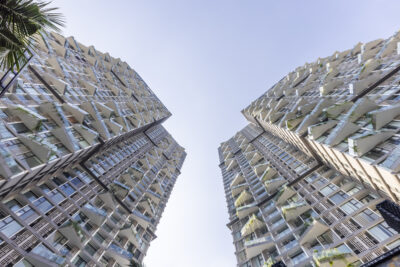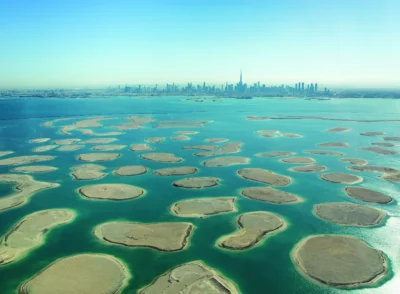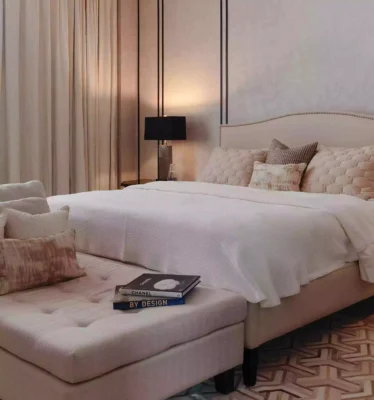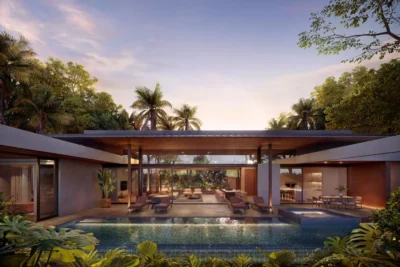MAST’s land on water: Adapting to rising seas with sustainable floating designs
The innovative floating architecture can be assembled anywhere in the world to mitigate the threat to cities from rising oceans
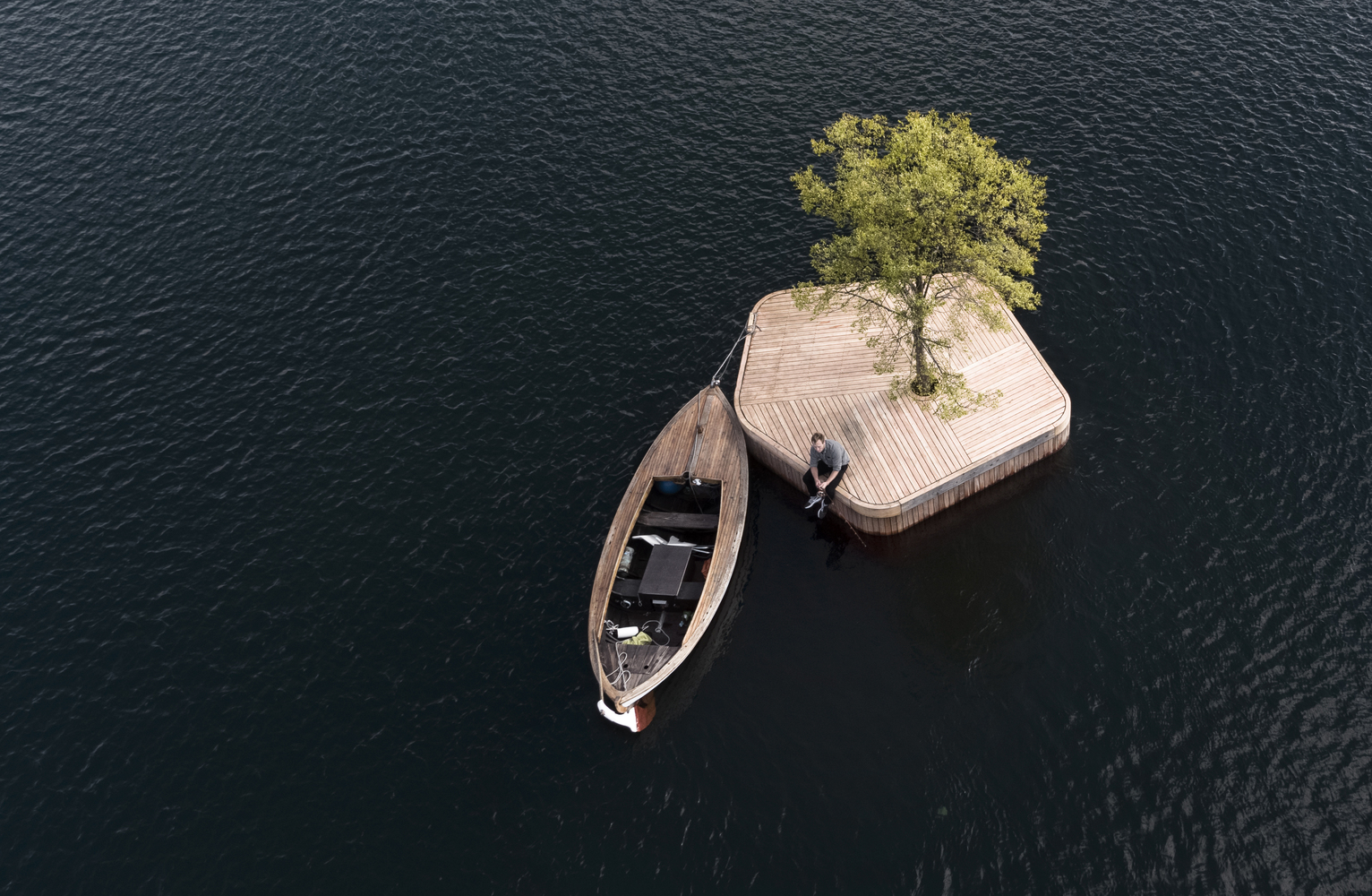
It is the distant future. The polar ice caps have melted, and Earth is completely submerged. The remnants of humanity live on boats and manmade islands known as atolls.
Sound familiar? Of course, this is the synopsis of the 1995 blockbuster Waterworld. Unlike in the post-apocalyptic movie, loosely set around the year 2500, a similarly sodden reality may wash over us much sooner.
Kevin Costner played the lone antihero sailing the seas in search of an alternative to the submarine nightmare-scape. But in 2023, the future of many urban dwellers may well depend on the designs of Marshall Blecher.
The Australian architect and his partner, Danish maritime designer Magnus Maarbjerg, have rapidly made names for themselves since founding MAST in 2021. The Copenhagen-based practice works with water to create innovative, open, and sustainable spaces.
Its latest venture Land on Water proposes an efficient and alternative way of living in response to increasing sea levels. Designed with the support of Hubert Rhomberg and venture studio Fragile, this adaptable and climate-resilient floating architecture comprises modules made of reinforced recycled plastic, which can be transported and assembled anywhere in the world in a variety of configurations.
The system works a little like traditional Gabion cages, which are filled with rubble, stacked together, and connected using heavy-duty wire to affordable foundations. But in this case, the idea is flipped, and the cages are filled with floating material. These are then bound to form a spaceframe structure which can support buildings or landscaping above.
“Floating buildings offer enormous potential for creating sustainable, flexible, and climate-resilient communities,” explains Blecher. “The flexibility of floating buildings is a crucial part. Nowadays, buildings on land often only have a lifespan of 30 years before demolition in rapidly developing cities, while floating buildings can be moved around rather than demolished.
“They also offer new opportunities for homeownership models.”
Brought up on a rural stretch of Australian coastline, Blecher was basically raised on the waves. “I started surfing almost as soon as I learned to walk,” he jokes, adding that “spearfishing and making things and building” were favourite pastimes—another nod perhaps to Costner’s character The Mariner.
Since relocating to Denmark to gain a master’s degree in architecture from the Royal Danish Academy (RDA) of the Arts, the designer has racked up accolades. He is the recipient of the Hezlet Bequest, the Byera Hadley Award, the Mirvac Award, and the 2018 Taipei International Design Prize in the Social Design and Public Art categories. Blecher has also been shortlisted for the Beazley Design Award and exhibited at the London Design Museum and Salone del Mobile.
But it was only after meeting Maarbjerg at RDA that he truly began to combine his passions for design and the briny deep. The Danish architect also had a unique seafaring upbringing, having grown up on an antique 100-foot timber ship, on which he traversed the Atlantic six times. Combining their shared interest in the intersection of cities and the sea, the pair began collaborating on small enterprises in their spare time. Then, two years ago, MAST set sail.
The practice has already made waves globally. Its projects so far have ranged from standalone private properties, such as the Houseboat Svendborgsund—a new home inside a converted wooden car ferry from 1947—to large-scale projects with local municipalities and major developers.
“We are lucky that we generally attract clients who are interested in innovation and open design,” Blecher says.
Close collaboration with clients also allows the firm to steer the helm on each assignment. “We build a lot of the smaller projects ourselves in the shipyards of southern Copenhagen,” he adds. “This informs our design approach. We like working with wood, for instance, because it is sustainable, light, and resilient.
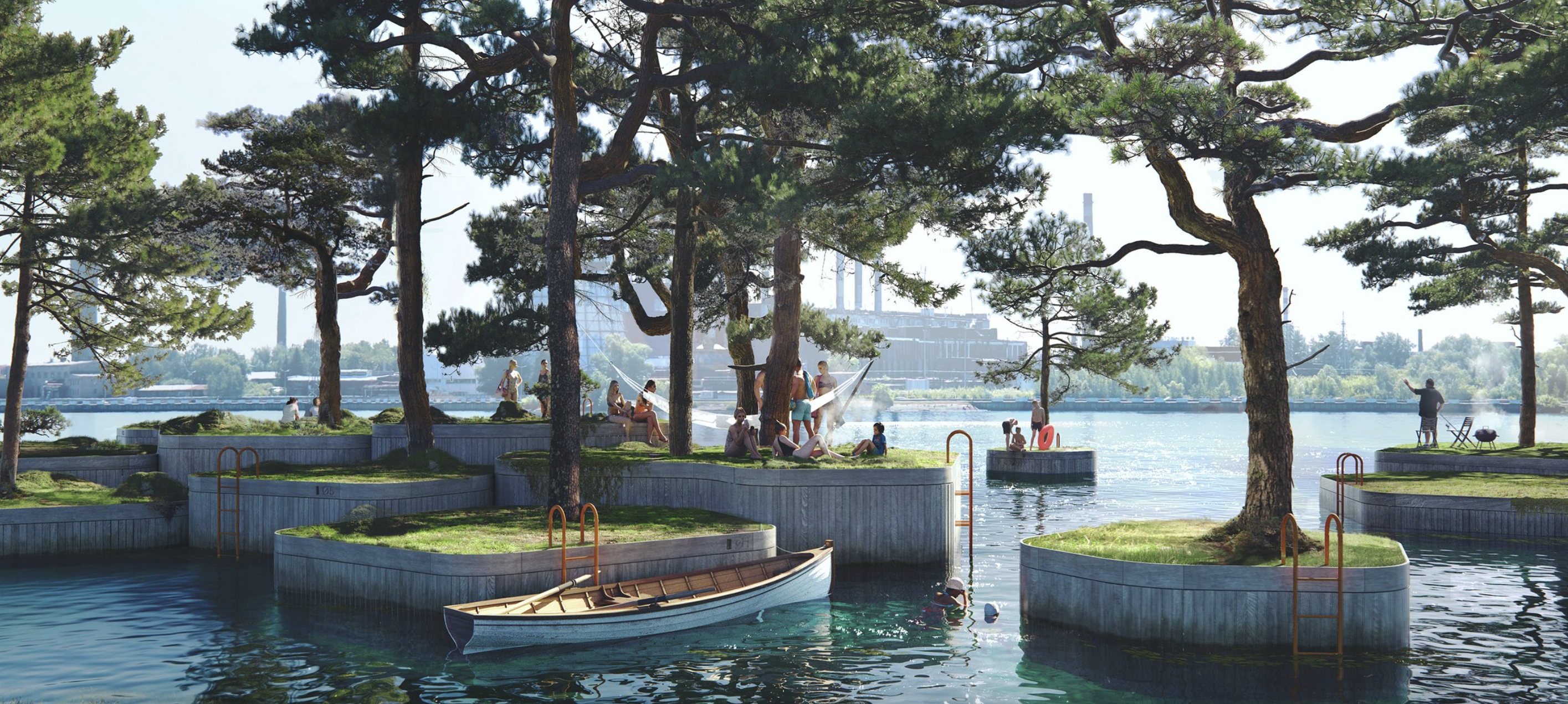
“We also place a huge focus on how our projects will age. The marine environment is harsh and unforgiving, so we try to design structures that develop patina and improve with age.”
Still, it will take more than aged aesthetics to address the very real threat coastal metropolises— many of which are in Southeast Asia—face if the capitalist-fuelled climate crisis continues unabated. Within three decades, many of the world’s major coastal cities could be all but wiped out, according to research by US-based scientific news organisation Climate Central. In a report on the oceans and cryosphere, the United Nations’ Intergovernmental Panel on Climate Change highlighted the accelerated melting of ice sheets in Greenland and the Antarctic, noting that sea levels are rising twice as fast as they did in the 20th century.
There is a growing awareness of the risks of urban flooding and sea level rise. By creating a radical new approach to building on water, we hope to unlock the potential of water-based construction
Blecher adds that MAST is already looking into new projects in Asia, but these remain in the pipeline.
While The Mariner and his crew are determined to escape the man-made atolls in search of dry land, Blecher believes that we must confront the dangers posed to our coastal cities and be ready for a future in which floating cities are a reality.
“There is finally a growing awareness of the risks of urban flooding and sea level rise,” he says. “And by creating a radical new approach to building on water, we hope to unlock the potential of water-based construction around the world.”
Copenhagen Islands
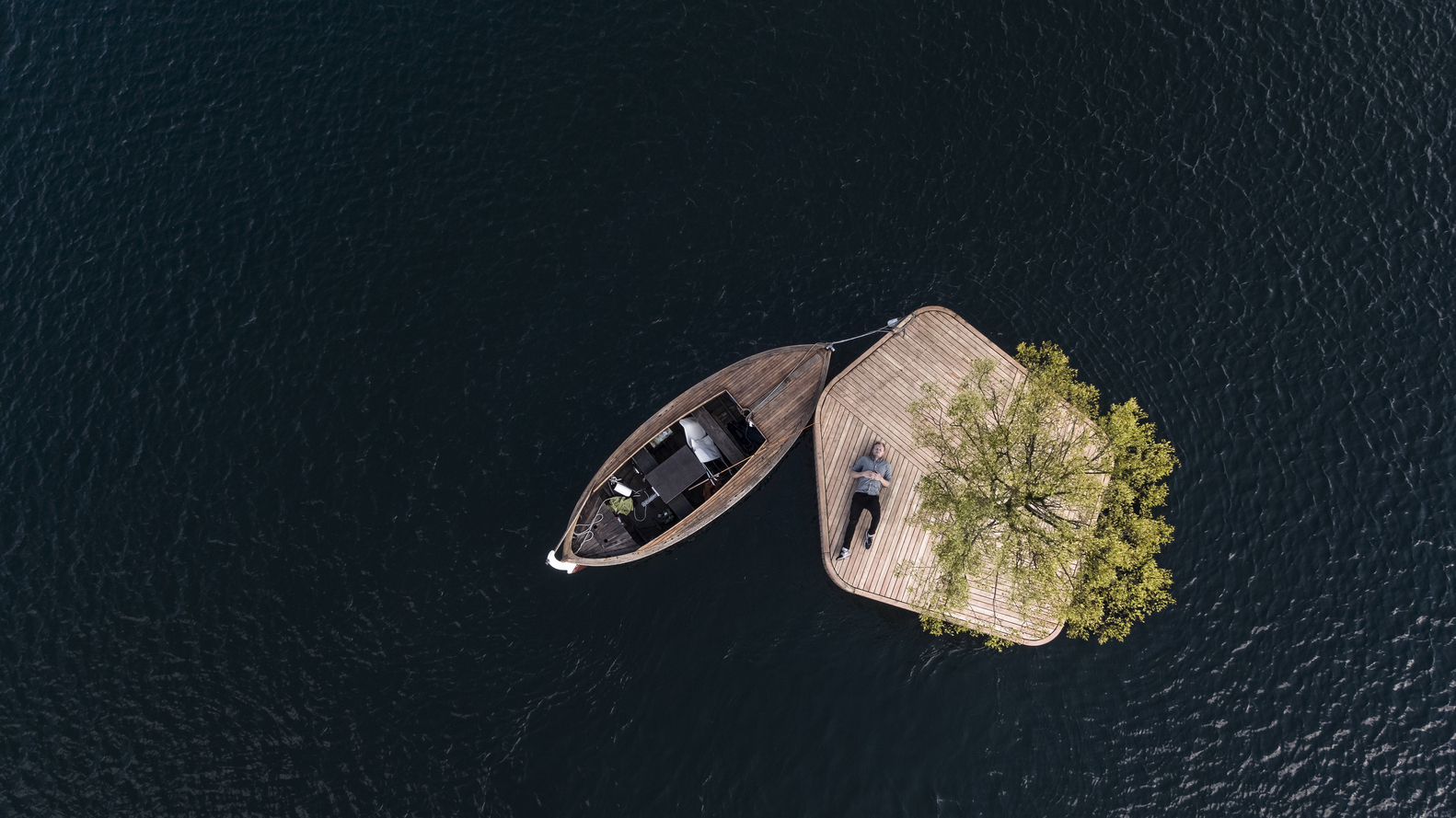
The “parkipelago” of floating islands introduces a new archetype in urban space to the Danish capital’s harbour. Constructed by hand using traditional wooden boatbuilding techniques, they will be moved seasonally between underutilised and newly developed parts of the harbour, catalysing life and activity. The first prototype island CPH-Ø1 was launched in 2018. Others have followed with plans afoot to introduce more in the coming years.
“The islands reintroduce wilderness and whimsey to the rapidly gentrifying harbour, with endemic plants, trees and grasses above and anchor points below providing a habitat for birds and insects, seaweeds, fish, and molluscs,” Blecher explains. “More importantly, the project hints at a new type of climate-resilient urbanism, inherently flexible in its use and only using sustainably sourced and recycled materials.”
Dyppezone
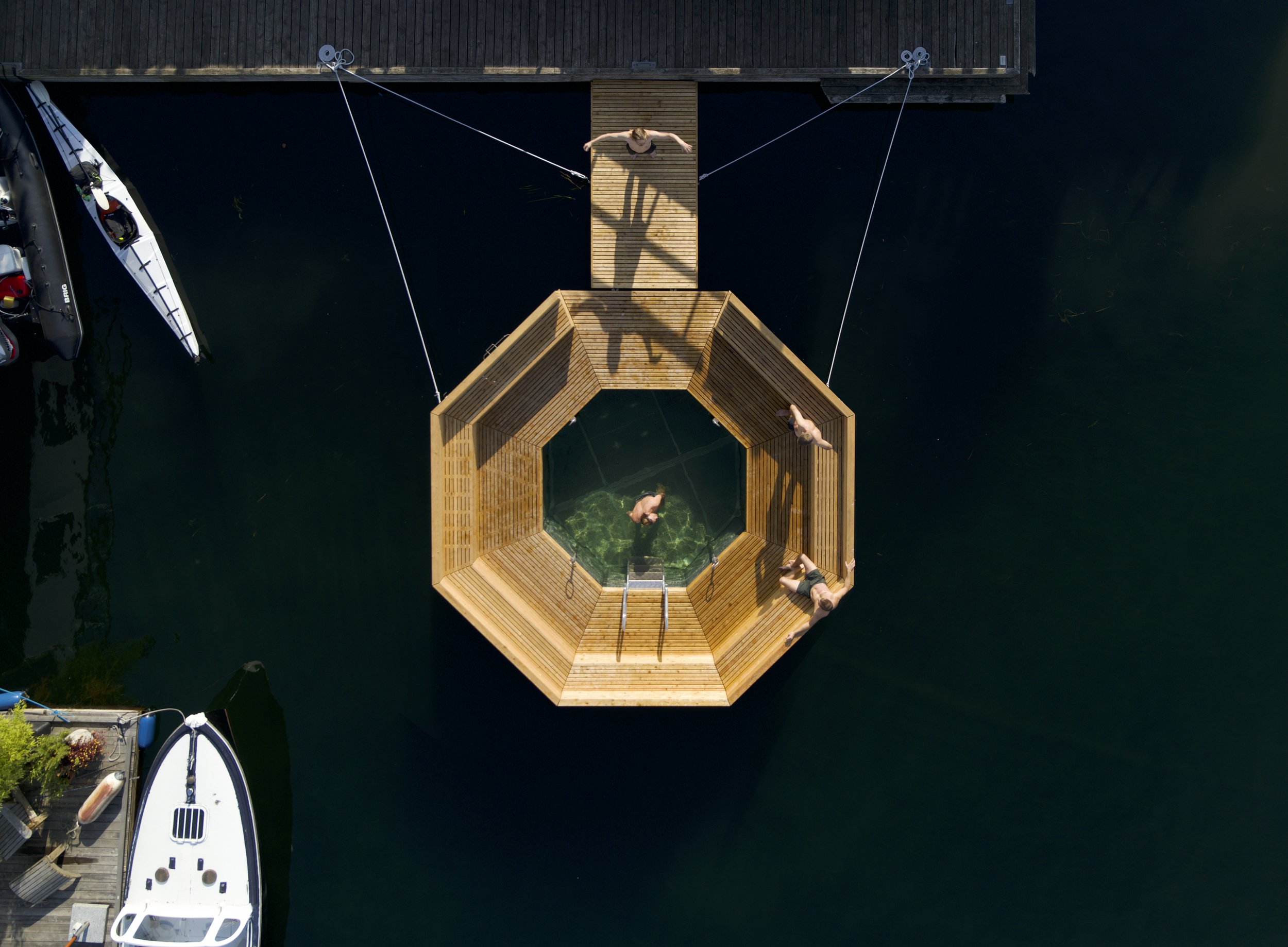
Another striking addition to the waters of Copenhagen, Dyppezone is a movable open-air bath made up of floating modules assembled around a central pool. The pool is equipped with an adjustable bottom that can be raised or lowered depending on the season and needs. It can therefore be used as a children’s pool during the summer and a cold water basin during the winter.
“In contrast to the permanent bathing zones in the Port of Copenhagen, a small mobile unit can easily be moved around the harbour,” Blecher says. “It can be located either in the existing bathing zones or in connection with events and saunas set up on the quayside. It is free for use to all bathing Copenhageners who want a comfortable and safe way to swim in the harbour.”
Land on Water
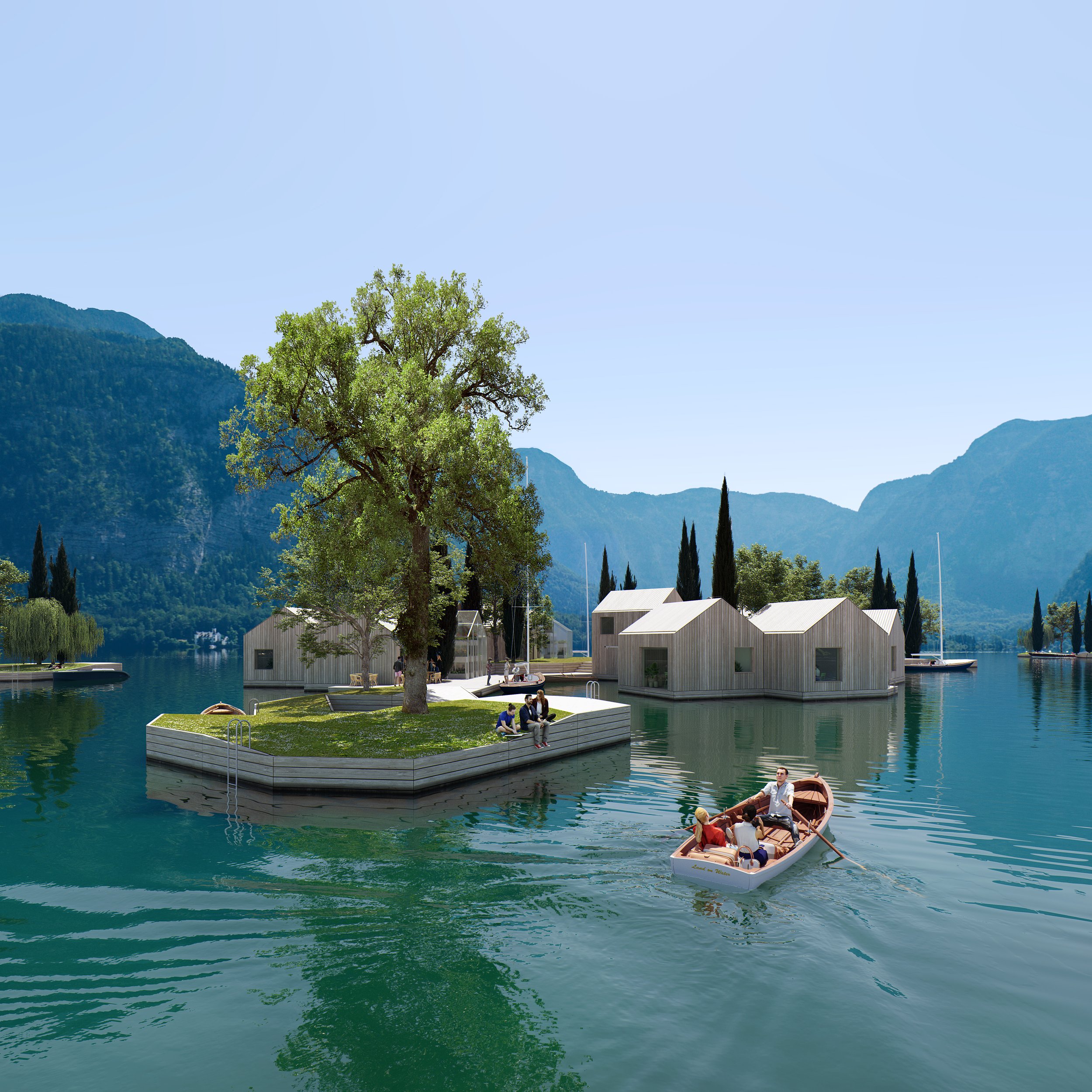
The system is based on simple, flat-pack modules made from reinforced, recycled plastic that can be easily transported around the globe and assembled into countless configurations, providing a secure floating foundation for building housing and infrastructure.
“It is inspired by Gabion construction, an ancient technology, which utilises mesh cages filled with rubble to create extremely sturdy, low-cost foundations,” according to Blecher. “In this case the concept is inverted; and the modular ‘cages’ are filled with locally sourced, upcycled floatation supporting the weight of any structure built on top.
“This has the unique advantage that floatation can be adjusted at any time if weight is added above.
Platform C
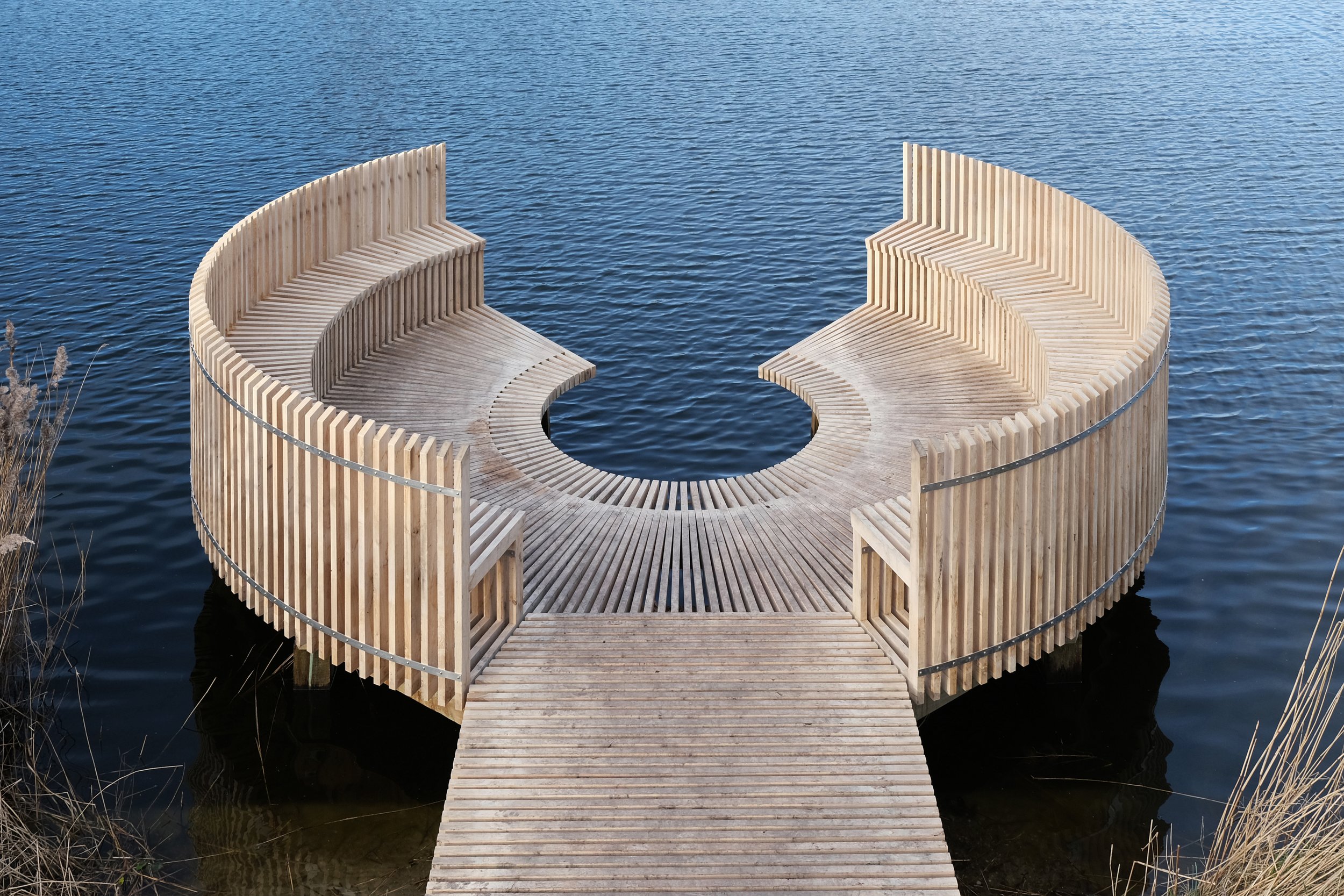
Located on a previously inaccessible stretch of waterfront in the centre of Copenhagen, the public space was designed to provide access to the open water for people to launch kayaks, swim, or simply relax and meet with others.
The construction consists of 900 equally dimensioned oak slats that pivot around a centre, creating an airy geometric structure. It also includes a protective semi-circular bench with a high back to shield it from the wind.
“The platform has become a favourite gathering spot for locals and an Instagram favourite,” Blecher says. “It has opened up a previously inaccessible stretch of water and provided a totally new type of space for locals and tourists to enjoy.
Centroparco Milano
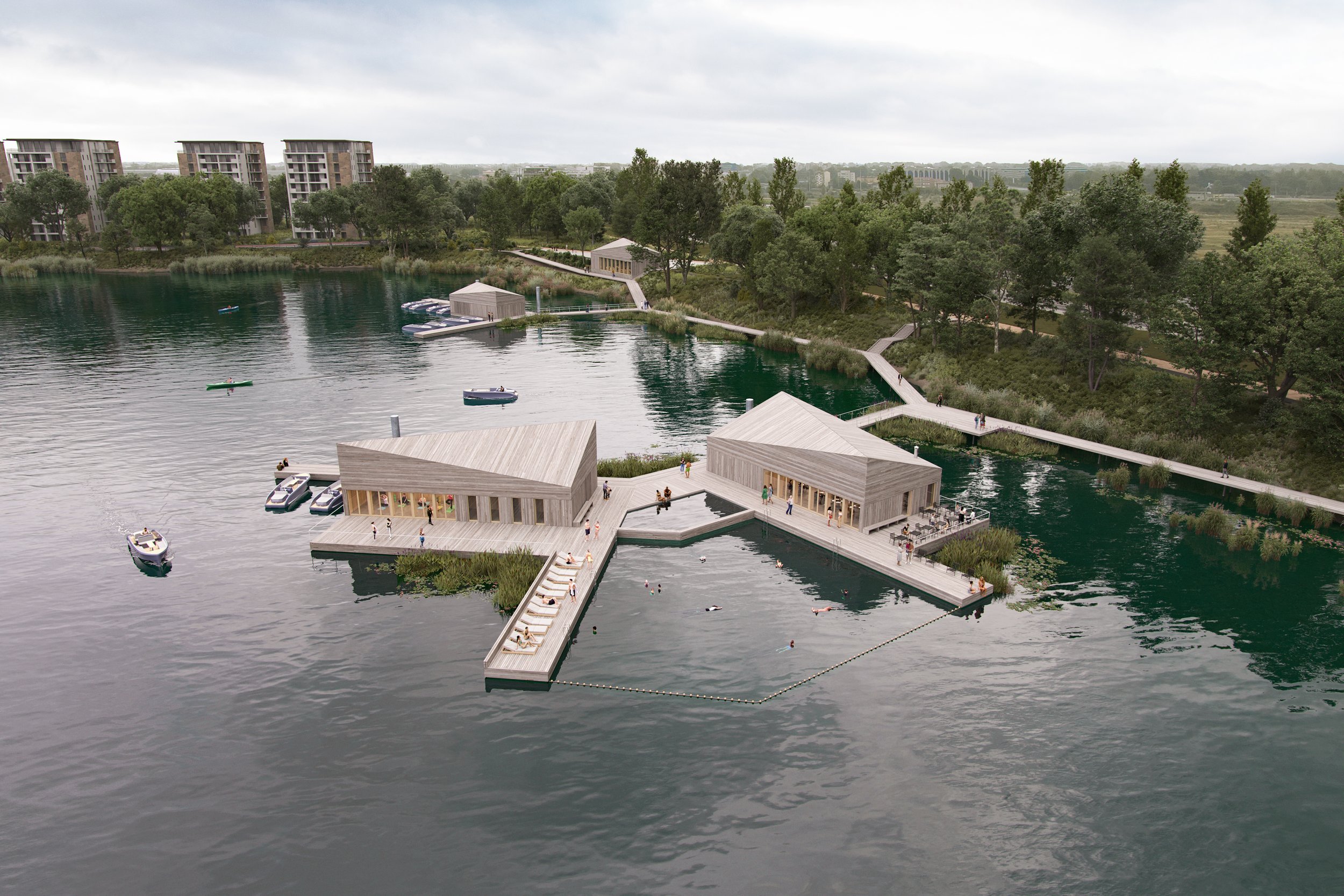
MAST was engaged by the Municipality of Segrate to transform a former sand quarry on the eastern fringes of Milan into a new central park, connecting surrounding neighbourhoods and offering residents a place to retreat into nature.
The development includes a floating spa with yoga studios, treatment rooms, saunas, and a café surrounding a protected swimming area. The spa buildings and swimming zone float on the lake, moving up and down with the lake’s levels, which can vary by more than two metres depending on groundwater levels and rainfall.
“Additional boat rental stations will eventually be added at different points around the lake, allowing visitors to criss-cross the lake and visit the different attractions around it,” Blecher adds. “A fine-dining restaurant is also perched on the rim of the lake edge, with a panoramic view over the floating islands, constructed using timber portal frames and timber cladding.”
Houseboat Svendborgsund
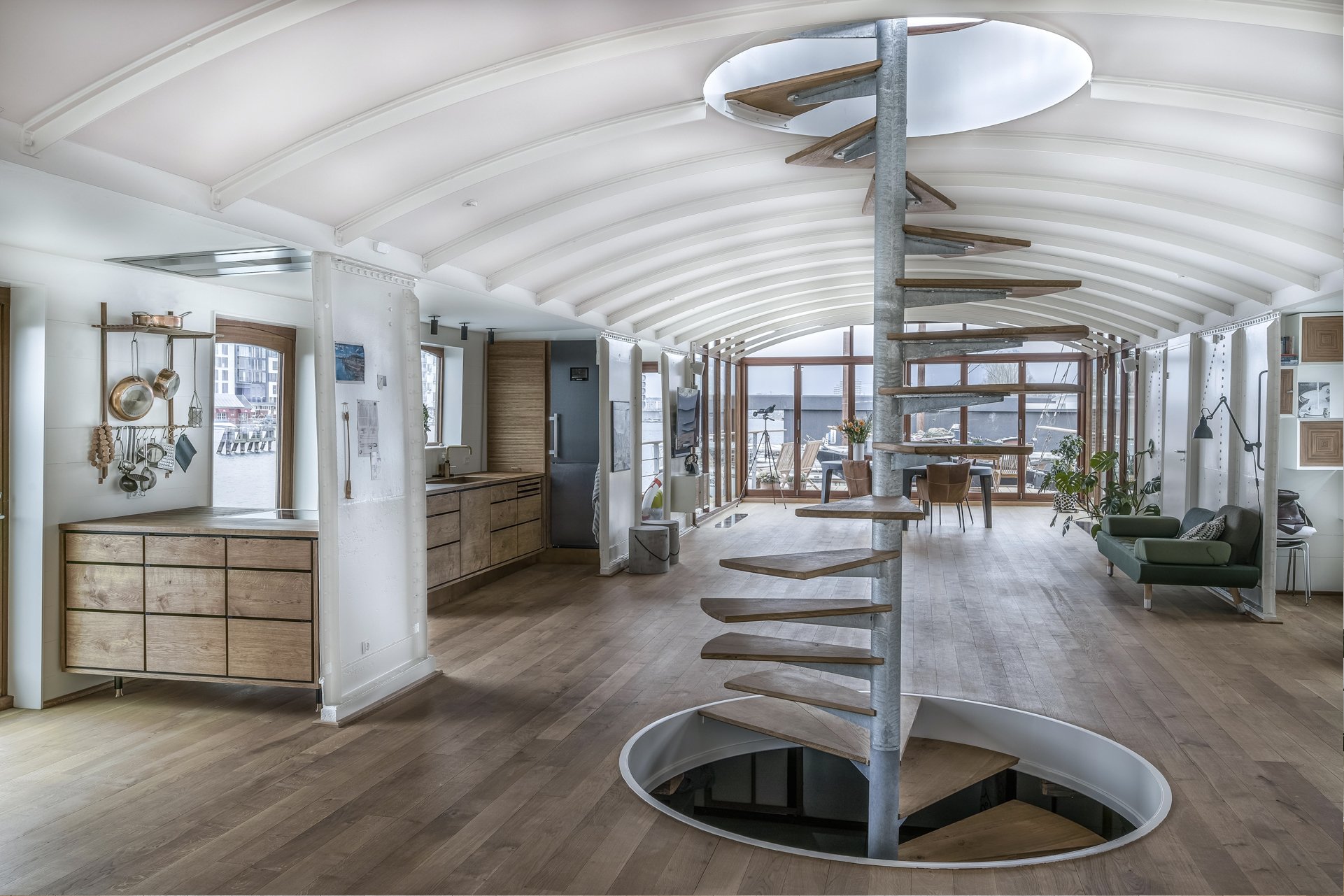
Houseboats, particularly in coastal cities, offer a compelling alternative to the typical brick-and-mortar terra firma home. For Houseboat Svendborgsund, MAST designed a multifunctional two-floor house on water by reviving and transforming a 1947 car ferry. Closely collaborating with the client, the firm took inspiration from traditional boat galleys for the houseboat’s interior.
“The main design principle was put into creating a modular construction system that would allow to scale down the size of the interior during the heating season but also to create a vibrant facade using a method of wood carbonisation,” Blecher explains. “Moreover, the interior is designed to favour multifunctionality and provide smart storage solutions.”
This article was originally published on asiarealestatesummit.com. Write to our editors at [email protected].
Recommended
Dewan Architects’ Mohammed Adib leads with human-centred design and technological innovation in the Middle East and beyond
Mohammed Adib channels his childhood curiosity and dislike for design uniformity into his work at Dewan Architects + Engineers
UAE real estate shifts focus to sustainability and quality, revitalising iconic projects
The UAE has risen from its challenges to emerge as a more sustainable, quality-focused destination
Exploring A Life By Design’s maximalist approach to interior design
Andrea Savage is embracing the maximalist trend with bold and vibrant interior designs
Jakarta’s emerging innovation hub integrates tech and healthcare sectors
The Digital Hub in BSD City is being positioned as Indonesia’s counterpart to Silicon Valley


